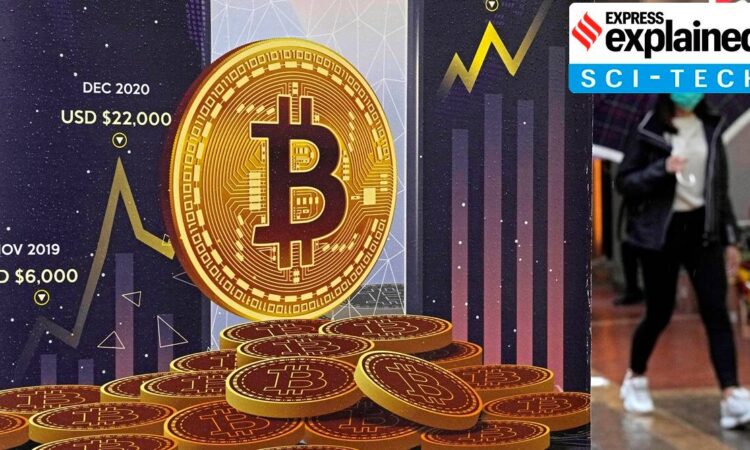
Editor’s note: Since this article was published, FTX filed for bankruptcy on November 11, one of the biggest crypto blowups ever, after traders rushed to withdraw $6 billion from the platform in a chaotic 72 hours. CEO Sam Bankman-Fried has resigned.
On November 12, Reuters reported that FTX had announced it had detected unauthorised access, and analysts said hundreds of millions of dollars of assets had been moved from the platform in “suspicious circumstances”. There was speculation about the whereabouts of Bankman-Fried.
When the cryptocurrency market experienced a $2 trillion crash in May 2022, the crypto company FTX offered financial lifelines to several collapsing firms.
But last week, FTX needed a bailout, which its rival Binance seemed on the cusp of delivering. Then Binance reversed itself, saying it was pulling out of a deal to acquire the company.
What are FTX and Binance?
FTX and Binance are cryptocurrency exchanges, meaning they enable customers to trade digital currencies for other digital currencies or traditional money, and vice versa. The two exchanges process the majority of all crypto trades in the world, according to CoinMarketCap, an industry data tracker.
FTX, one of the world’s largest exchanges, was run by Sam Bankman-Fried and is headquartered in the Bahamas. It has spent millions of dollars lobbying US legislators to institute crypto-friendly regulation.
Binance, the largest exchange, is run by billionaire Changpeng Zhao. The company, which has no official headquarters and largely functions outside of the United States, has been scrutinized for skirting regulatory rules. Binance was an early investor in FTX.
Both companies built their businesses on risky trading options that are not legal in the United States. They each have smaller US arms, Binance.us and FTX.us, which are separate from their sister companies and are meant to comply with U.S. regulations.
The crypto industry has increasingly been the target of regulatory scrutiny on Capitol Hill and across the world. Zhao, 45, and Bankman-Fried, 30, have publicly butted heads over how to regulate cryptocurrency — or whether to do so at all.
Why did FTX run into trouble?
FTX has a native cryptocurrency token called FTT, which traders use for operations like paying transaction fees. Last year, Zhao sold his stake in FTX back to Bankman-Fried, who paid for it partially with FTT tokens.
On November 2, the crypto publication CoinDesk reported on a leaked document that appeared to show that Alameda Research, a hedge fund run by Bankman-Fried, held an unusually large amount of FTT tokens. FTX and Alameda are meant to be separate businesses, but the report claimed that they had close financial ties.
Binance announced on November 6 that it would sell its FTT tokens “due to recent revelations”. In response, FTT’s price plummeted and traders rushed to pull out of FTX, fearful that it would be yet another fallen crypto company.
FTX scrambled to process requests for withdrawals, which amounted to an estimated $6 billion over three days. It seemed to enter a liquidity crunch, meaning it lacked the money to fulfill requests.
How did Binance intervene?
On November 8, Binance said it had reached an agreement to bail out FTX by buying the company. But, Zhao added in the announcement, “Binance has the discretion to pull out from the deal at any time.”
In a concurrent announcement, Bankman-Fried said the deal would protect customers and allow FTX to finish processing their withdrawals. He attempted to dispel rumours of conflict between FTX and Binance, adding, “we are in the best of hands.”
Why did the deal between Binance and FTX unravel?
On November 9, Binance announced it would no longer buy FTX, saying it had arrived at that decision “as a result of corporate due diligence”. It also cited regulatory investigations and reports of mishandled funds.
“Every time a major player in an industry fails, retail consumers will suffer,” Binance said in a statement. “We have seen over the last several years that the crypto ecosystem is becoming more resilient and we believe in time that outliers that misuse user funds will be weeded out by the free market.”
On Thursday, FTX announced it had reached an agreement with Tron, a blockchain platform, to swap certain tokens from FTX to other crypto wallets.
Why has the FTX situation affected the cryptocurrency market?
The cryptocurrency industry has long struggled to convince regulators, investors and ordinary customers that it is trustworthy. The fall of FTX, which seemed more stable than other companies, and the pullout by Binance have jolted the market.
FTT’s price has fallen about 80% since Tuesday. The prices of bitcoin and ether, some of the most valuable tokens, have both fluctuated widely since November 8, at one point dropping more than 20%.



